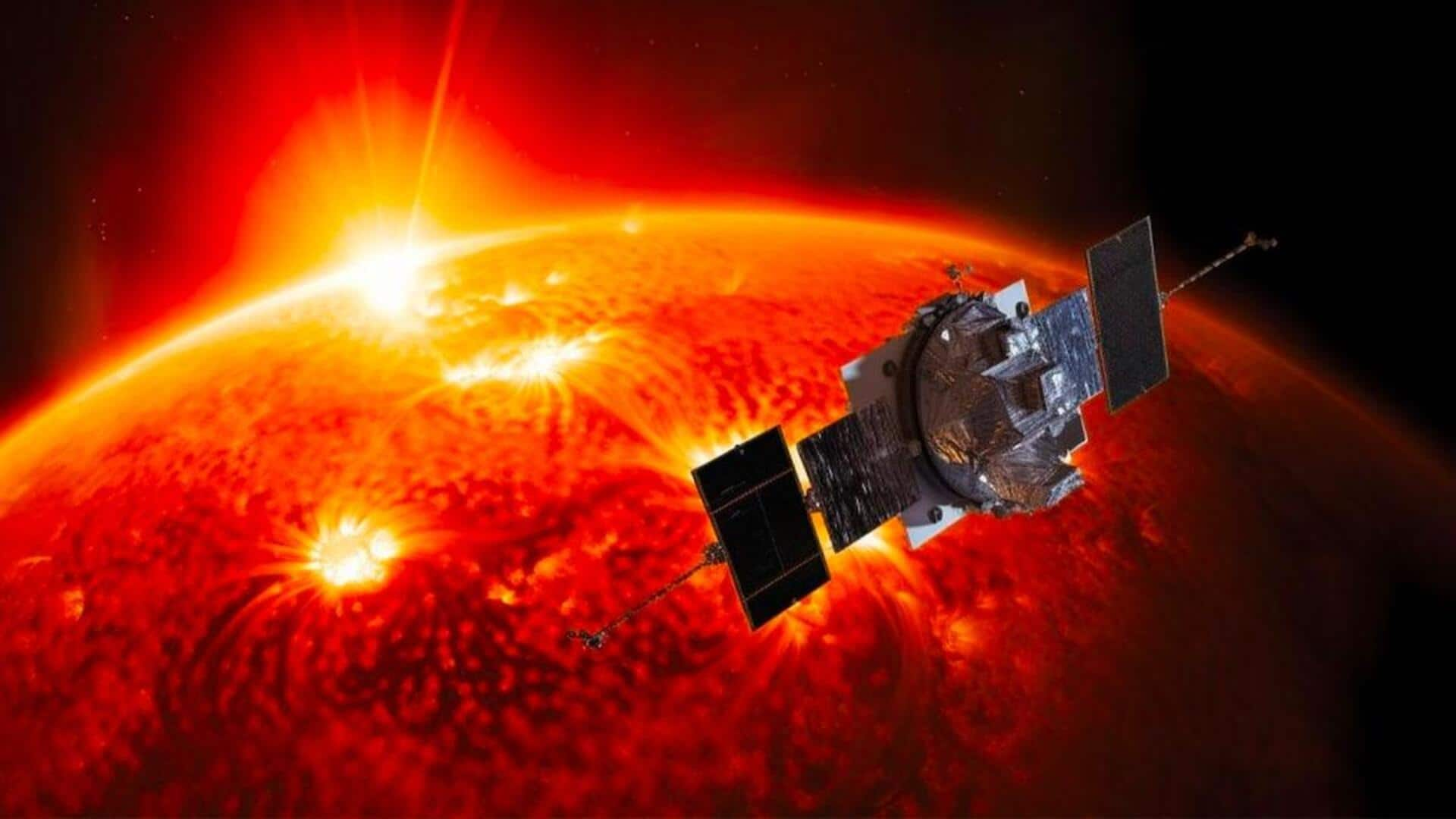
India's Aditya-L1 has perpetual view of solar eclipse: Here's how
What's the story
India's first mission to explore the Sun, Aditya-L1, is witnessing a continuous total solar eclipse since its launch earlier this year. Unlike NASA crafts that have traveled much closer to the Sun, Aditya-L1 covers only 1% of the distance between Earth and the Sun. The spacecraft is strategically positioned at 'L1' or 'Lagrange point 1,' offering an uninterrupted view of our star.
Eclipse analogy
Explaining Aditya-L1's perpetual solar eclipse view
Senior Professor Jayant Murthy of the Indian Institute of Astrophysics, explained how Aditya-L1 can observe a total solar eclipse, even when there isn't one happening. He likened it to "bringing a thumb in front of the eye and blocking the view of a large building that is in front." From North America's perspective, he added, it would appear as if a disk (Moon) had obscured the Sun.
Terrestrial difficulties
Challenges of terrestrial solar observations
Observing the Sun from ground-based observatories presents several challenges. Factors such as day-night cycles, specific equipment characteristics, dust particles deflecting radiation, and distortion caused by Earth's atmosphere can lead to discrepancies in solar data. These elements make it difficult to gather consistent and accurate information about the Sun from terrestrial observatories.
VELC advantage
Aditya-L1's solution: The VELC
Aditya-L1 addresses the challenges of terrestrial solar observations by using an instrument called the Visible Emission Line Coronagraph (VELC). This device can intentionally block light from the photosphere, and analyze light from the corona. Professor Ramesh from the Indian Institute of Astrophysics likened this to viewing during a solar eclipse, emphasizing that studying solar corona is crucial due to its volatile nature, and potential to disrupt satellite operations.
Eclipse immunity
Aditya-L1's unaffected view during Earth's solar eclipse
During the total solar eclipse yesterday (April 8), observable from certain regions in North America, Aditya-L1's view of the Sun remained unaffected. S Somanath, Chairperson of the Indian Space Research Organisation (ISRO), stated that "Aditya L1 spacecraft will not see the solar eclipse as the Moon is behind the spacecraft." He further clarified that at Lagrange Point 1, Earth-visible eclipses hold little significance.